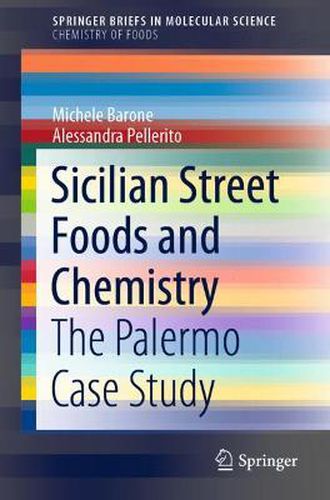Readings Newsletter
Become a Readings Member to make your shopping experience even easier.
Sign in or sign up for free!
You’re not far away from qualifying for FREE standard shipping within Australia
You’ve qualified for FREE standard shipping within Australia
The cart is loading…






This title is printed to order. This book may have been self-published. If so, we cannot guarantee the quality of the content. In the main most books will have gone through the editing process however some may not. We therefore suggest that you be aware of this before ordering this book. If in doubt check either the author or publisher’s details as we are unable to accept any returns unless they are faulty. Please contact us if you have any questions.
This book reviews the authenticity of certain Street Food specialties from the viewpoint of food chemists. At present, the food market clearly shows the predominance of fast-food operators in many Western countries. However, the concomitant presence of the traditional lifestyle model known as the Mediterranean Diet in Europe has also been increasingly adopted in many countries, in some cases with unforeseen effects such as offering Mediterranean-like foods for out-of-home consumption. This commercial strategy also includes the so-called Street Food, which is marketed as a variation on Mediterranean foods. One of the best known versions of Street Food products can be found in Sicily, Italy, and particularly in its largest city, Palermo. Because of certain authenticity issues, the Italian National Council of Research Chemists has issued four procedural guidelines for various Palermo specialties with the aim of attaining the traditional specialty guaranteed status in accordance with European Regulation (EU) No 1151/2012. The first chapter of the book provides a brief introduction to the general concept of Street Foods. The remaining four chapters describe four food specialties - Arancina, Sfincionello, Pane ca meusa, and Pane e panelle - typically produced in Palermo, with particular reference to their chemical composition, identification of raw materials from a chemical viewpoint, permissible cooking and preparation procedures (with chemical explanations), preservation, and storage. The book offers a unique guide to Street Food authenticity, and can also serve as a reference work for other traditional/historical products.
$9.00 standard shipping within Australia
FREE standard shipping within Australia for orders over $100.00
Express & International shipping calculated at checkout
This title is printed to order. This book may have been self-published. If so, we cannot guarantee the quality of the content. In the main most books will have gone through the editing process however some may not. We therefore suggest that you be aware of this before ordering this book. If in doubt check either the author or publisher’s details as we are unable to accept any returns unless they are faulty. Please contact us if you have any questions.
This book reviews the authenticity of certain Street Food specialties from the viewpoint of food chemists. At present, the food market clearly shows the predominance of fast-food operators in many Western countries. However, the concomitant presence of the traditional lifestyle model known as the Mediterranean Diet in Europe has also been increasingly adopted in many countries, in some cases with unforeseen effects such as offering Mediterranean-like foods for out-of-home consumption. This commercial strategy also includes the so-called Street Food, which is marketed as a variation on Mediterranean foods. One of the best known versions of Street Food products can be found in Sicily, Italy, and particularly in its largest city, Palermo. Because of certain authenticity issues, the Italian National Council of Research Chemists has issued four procedural guidelines for various Palermo specialties with the aim of attaining the traditional specialty guaranteed status in accordance with European Regulation (EU) No 1151/2012. The first chapter of the book provides a brief introduction to the general concept of Street Foods. The remaining four chapters describe four food specialties - Arancina, Sfincionello, Pane ca meusa, and Pane e panelle - typically produced in Palermo, with particular reference to their chemical composition, identification of raw materials from a chemical viewpoint, permissible cooking and preparation procedures (with chemical explanations), preservation, and storage. The book offers a unique guide to Street Food authenticity, and can also serve as a reference work for other traditional/historical products.